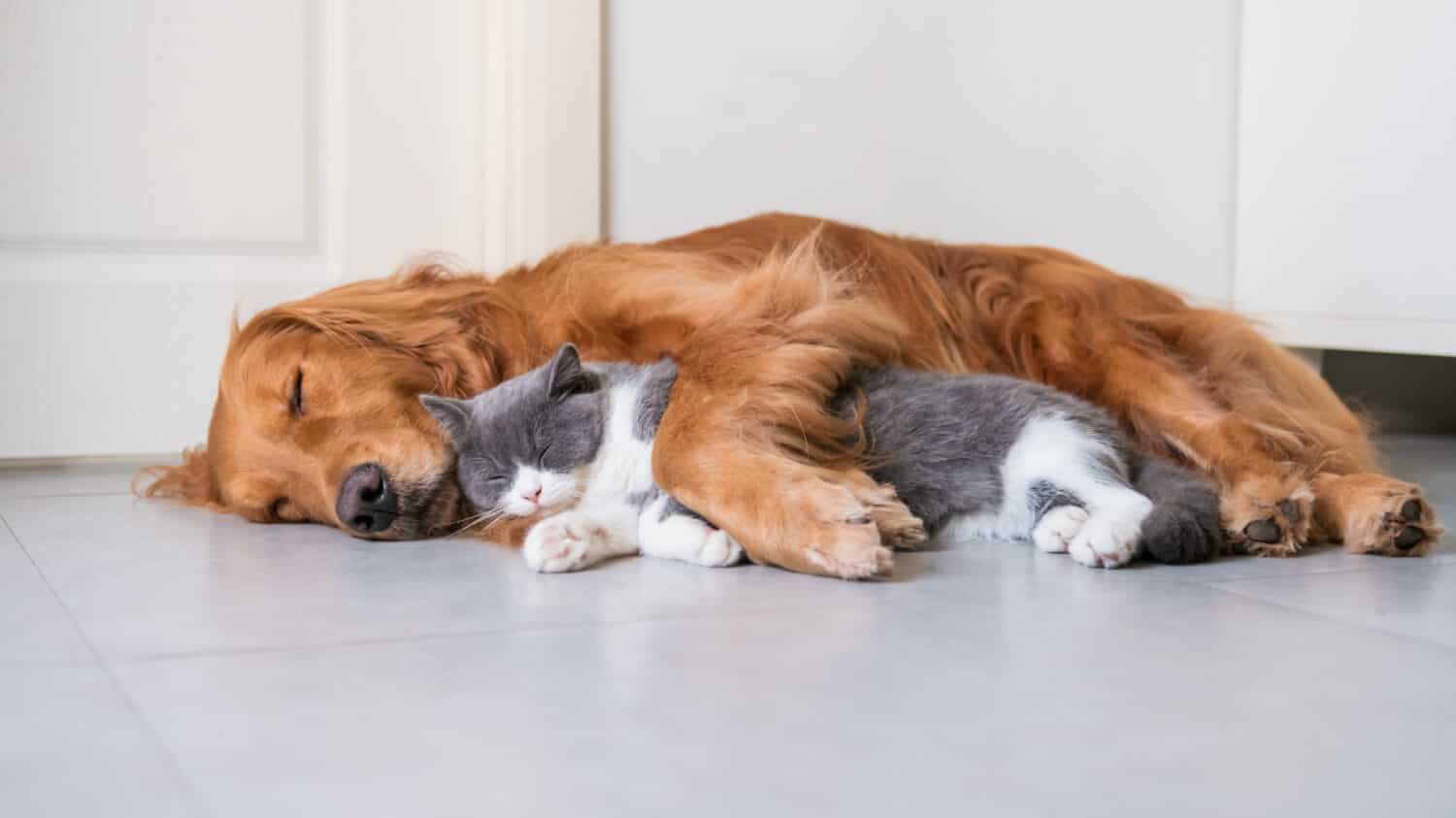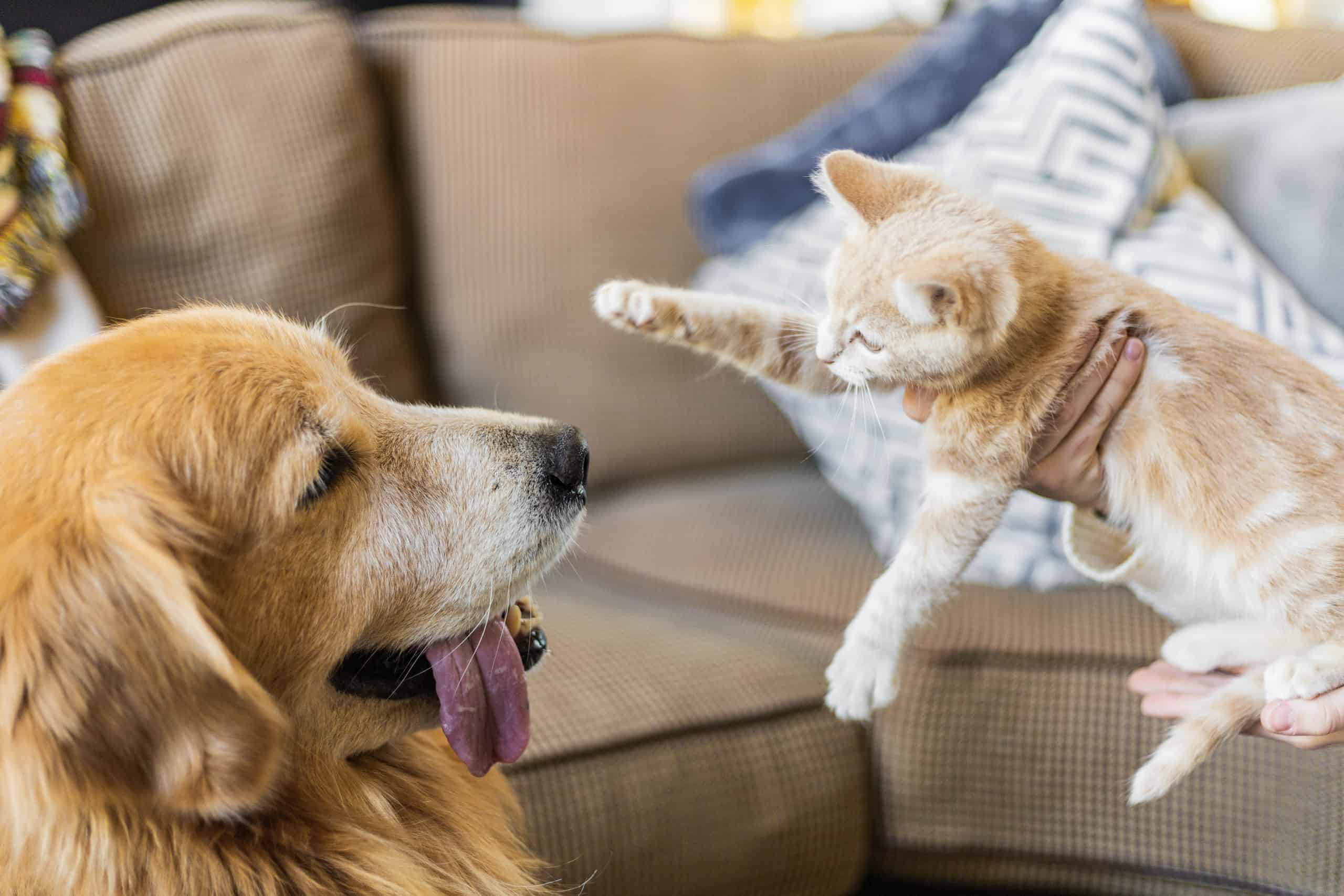Are you a cat person, or are you a dog person? Who would you rather see win a feline-canine smackdown — Fido or Fluffy? People seem to believe that dogs do not like cats and cats do not like dogs. The truth is, as anyone who has owned both can tell you, cats and dogs are not natural enemies. And no matter what the cartoons and movies say, cats and dogs get along — until they don’t. If they don’t, it’s not because of some natural rivalry. It’s because their behaviors are sometimes different.
How this popular myth of dogs not liking cats arose has been lost to history. Scientists used to think the ancient Egyptians were the first to domesticate the cat around 6,000 years ago. But recent evidence suggests that cats became domesticated during the Neolithic Revolution some 10,000 years ago. That change occurred along the Tigris and Euphrates Rivers (the Fertile Crescent) in today’s modern Iraq.
As for dogs, evidence suggests they became domesticated in Eurasia between 14,000 and 29,000 years ago. Most scientists agree dogs descended from a line of wolves that followed nomadic hunters and gatherers to chow down on the remains of slaughtered animals that people left behind. In time, that wolf lineage became extinct, giving way to the modern dog.

The ancient Egyptians revered cats so much that they mummified them.
©Andrea Izzotti/Shutterstock.com
Let the Chase Begin
Eventually, the two species began interacting, and the dog-cat-hate trope grew to epic proportions, even though it wasn’t all that true. It all boils down to behavior. First, dogs love to chase things. They’ll chase balls, sticks, chipmunks, birds, and squirrels. Practically anything that moves a dog will chase — including cats.
For their part, cats love to run. They scamper up curtains and speed along kitchen floors. They’ll bolt from rooms seemingly without rhyme or reason. More importantly, cats also run when they feel threatened. So, it’s not a stretch to figure out why dogs chase cats. A dog wants to play. If a cat runs by — game on. As for the cat, well, it’s scared, and its flight or fight response takes over.

Cats may misinterpret a dog’s passion for playing.
©Mike2479/Shutterstock.com
Lack of Communication
Dogs and cats don’t always speak the same language. Take a cat’s tail. When it swishes back and forth, chances are it’s miffed about something. When a dog wags its tail, it’s one happy camper. It wants to play. Fido may see Fluffy wag its tail and think to itself, “Hey, Fluffy wants to play,” when she really doesn’t. Fluffy hisses. She swats and connects with a roundhouse to Fido’s nose.
Don’t Bother Me
Cats are mostly solitary animals who love their space. That predisposition influences how a cat will get along with others. A cat that is snoozing on the couch, for example, may swat at another cat who tries to curl up next to them.
Dogs, on the other hand, are extremely social animals. The friendlier a dog is, the more it wants to play or interact with someone. Fluffy can misinterpret the signals Fido is sending, so when he goes to lick her, “bam,” another swat on the nose. Let’s be clear; this doesn’t happen all the time. Moreover, older dogs may become testier as they age and begin to lash out at fast-moving, high-energy cats, kittens, and puppies.
Best Friends for Life?
Of course, these rules and behaviors do not apply in every instance. In fact, cats and dogs often become BFFs, especially if both are young. That’s a good thing. According to a study published in 2018 in the Journal of Veterinary Behavior, researchers found that across the industrialized world, the number of cats and dogs living together is on the rise.
The authors conducted a survey of dog and cat owners. They found that in the United States, 30.4 percent of households own cats, while 36.5 percent own dogs. In the United Kingdom, 7 percent of households surveyed contained both species. The authors said, “Despite social differences when conditions are correct, both species are capable of expressing amicability to one another.”
The majority of respondents said their pets “show amicability in their relationship” and are comfortable in each other’s presence. Typically, the cat is the main reason for this good-natured relationship. If the cat feels comfortable, then they are more likely to get along with any canines in the house.

The idea of dogs hating cats is just a myth, although their relationship is complicated.
©Masquad/Shutterstock.com
Thank you for reading! Have some feedback for us? Contact the AZ Animals editorial team.








